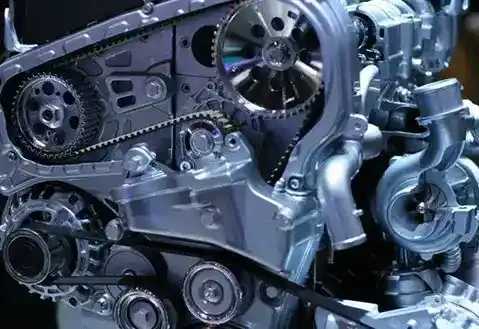- Arabic
- French
- Russian
- Spanish
- Portuguese
- Turkish
- Armenian
- English
- Albanian
- Amharic
- Azerbaijani
- Basque
- Belarusian
- Bengali
- Bosnian
- Bulgarian
- Catalan
- Cebuano
- Corsican
- Croatian
- Czech
- Danish
- Dutch
- Afrikaans
- Esperanto
- Estonian
- Finnish
- Frisian
- Galician
- Georgian
- German
- Greek
- Gujarati
- Haitian Creole
- hausa
- hawaiian
- Hebrew
- Hindi
- Miao
- Hungarian
- Icelandic
- igbo
- Indonesian
- irish
- Italian
- Japanese
- Javanese
- Kannada
- kazakh
- Khmer
- Rwandese
- Korean
- Kurdish
- Kyrgyz
- Lao
- Latin
- Latvian
- Lithuanian
- Luxembourgish
- Macedonian
- Malgashi
- Malay
- Malayalam
- Maltese
- Maori
- Marathi
- Mongolian
- Myanmar
- Nepali
- Norwegian
- Norwegian
- Occitan
- Pashto
- Persian
- Polish
- Punjabi
- Romanian
- Samoan
- Scottish Gaelic
- Serbian
- Sesotho
- Shona
- Sindhi
- Sinhala
- Slovak
- Slovenian
- Somali
- Sundanese
- Swahili
- Swedish
- Tagalog
- Tajik
- Tamil
- Tatar
- Telugu
- Thai
- Turkmen
- Ukrainian
- Urdu
- Uighur
- Uzbek
- Vietnamese
- Welsh
- Bantu
- Yiddish
- Yoruba
- Zulu
Dec . 11, 2024 04:38 Back to list
Four-Ribbed Auto Belt for Optimal Engine Performance and Reliability
Understanding the Importance of Auto Belts A Deep Dive into 4PK Belts
In the intricate world of automotive components, the significance of each part cannot be overstated—especially when it comes to drive belts. Among the various types of drive belts, the 4PK (often referred to as four-ribbed belts) has garnered attention due to its essential role in the operation of a vehicle’s engine accessories. Understanding the importance of 4PK belts can help vehicle owners appreciate their function, maintenance, and overall contribution to vehicle performance.
What is a 4PK Belt?
The term 4PK describes a specific type of serpentine belt characterized by four ribs on its inner surface. This ribbing provides excellent grip and ensures the efficient transfer of power from the engine to various accessories, such as the alternator, power steering pump, water pump, and air conditioning compressor. This design allows for enhanced stability and reliability under varying operational conditions, making it a preferred choice in many modern vehicles.
Role of 4PK Belts in Vehicle Performance
The 4PK belt plays a critical role in the smooth functioning of several engine components. By connecting various pulleys, it enables the efficient transmission of power needed for the operation of essential systems. Without a properly functioning belt, these components may not operate effectively, leading to costly repairs and reduced vehicle performance.
Signs of 4PK Belt Wear
As with all automotive components, 4PK belts are subject to wear and tear over time. Regular inspections can help vehicle owners identify potential issues before they lead to significant problems. Common signs of belt wear include fraying, cracking, glazing (a shiny appearance), and unusual noises, such as squeaking or squealing sounds during engine operation. It is advisable to replace worn or damaged belts promptly to prevent further complications.
auto belt 4pk

Maintenance Tips for 4PK Belts
To ensure the longevity and effectiveness of 4PK belts, proper maintenance is essential. Here are some handy tips
1. Regular Inspections Check the belt for signs of wear, and ensure it is properly aligned. Any noticeable misalignment can lead to uneven wear and reduced performance. 2. Tension Check Ensure that the belt has the correct tension. A belt that is too loose can slip, while one that is too tight can wear out faster and damage associated components.
3. Timely Replacement Consult your vehicle’s manual to determine the recommended replacement interval for the 4PK belt. Typically, belts are designed to last between 60,000 to 100,000 miles, but this can vary based on driving conditions and habits.
4. Environmental Considerations Extreme temperatures, exposure to oil or coolant leaks, and high humidity can accelerate belt deterioration. Keeping the engine compartment clean and promptly addressing leaks can extend the life of the belt.
Conclusion
In summary, the 4PK belt is a vital component that contributes significantly to the overall performance and efficiency of a vehicle. Understanding its function, recognizing the signs of wear, and following proper maintenance practices can help vehicle owners ensure their cars operate smoothly and reliably. By taking these proactive steps, you can avoid costly repairs and enhance your vehicle's longevity. So next time you take your car for maintenance, don't forget to give some attention to that unassuming yet critically important 4PK belt!
-
Korean Auto Parts Timing Belt 24312-37500 For Hyundai/Kia
NewsMar.07,2025
-
7PK2300 90916-T2024 RIBBED BELT POLY V BELT PK BELT
NewsMar.07,2025
-
Chinese Auto Belt Factory 310-2M-22 For BMW/Mercedes-Benz
NewsMar.07,2025
-
Chinese Auto Belt Factory 310-2M-22 For BMW/Mercedes-Benz
NewsMar.07,2025
-
90916-02660 PK Belt 6PK1680 For Toyota
NewsMar.07,2025
-
drive belt serpentine belt
NewsMar.07,2025

